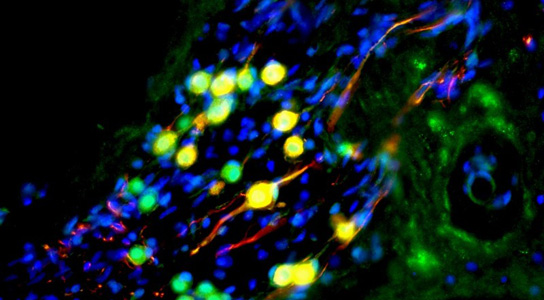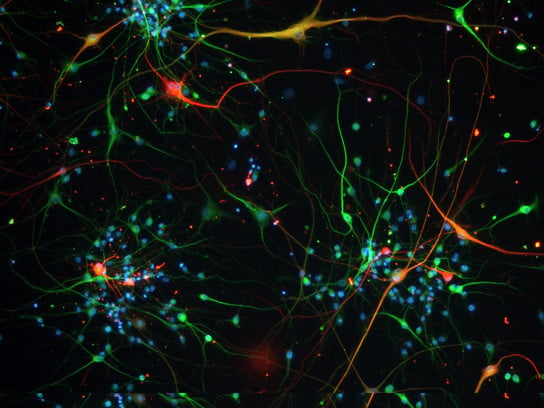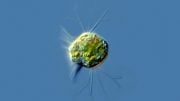
Human stem cells differentiated into auditory neurons.
There are more than 275 million people that have moderate to profound hearing loss, and many are caused by a breach in the connection between the inner ear and the brain. Researchers have discovered that a key component in repairing the auditory nerve is human embryonic stem cells.
The scientists published their findings in the journal Nature. They have been able to establish a proof of concept by using human embryonic stem cells to repair the damaged ears of gerbils.

Stem cells were differentiated into auditory nerve cells before, but this is the first instance of a successful transplantation into animals. It’s a pivotal step that will undoubtedly spur on more research.
Marcelo Rivolta, a stem-cell biologist at the University of Sheffield, UK, has spent the last decade developing ways to differentiate human embryonic stem cells into auditory neurons and the inner-ear hair cells, which translate sound into electrical signals.
The cells were transplanted into gerbils that had been treated with ouabain, a chemical that damages auditory nerves but not the hair cells. 10 weeks after the procedure, the transplanted cells had grown projections that formed connections to the brain stem. Testing has shown that many of the animals could hear much fainter sounds after transplantation, with an improvement of their overall hearing of 46%.
Since there are many ways that ears and the sense of hearing can be damaged, it remains unclear how many people would benefit from this kind of treatment; but stem cells could broaden the reach of existing therapies.
Reference: “Restoration of auditory evoked responses by human ES-cell-derived otic progenitors” by Wei Chen, Nopporn Jongkamonwiwat, Leila Abbas, Sarah Jacob Eshtan, Stuart L. Johnson, Stephanie Kuhn, Marta Milo, Johanna K. Thurlow, Peter W. Andrews, Walter Marcotti, Harry D. Moore and Marcelo N. Rivolta, 12 September 2012, Nature.
DOI: 10.1038/nature11415









Eye, Ear, Nose, Nails, Hair and oral tissues are all nothing but the modification of skin cells only in nature. Early amaeba had only one skin acting as mouth for phagocytosis, eye for sensing the light doing the functins of eye all over the body. Hence stem cell research in regeneration of rods and cones of the eye, or sensory neurons of ear and even reversing male alopacea can be promising and commendable. Obtaining embryonic stem cells from the umbilical cord blood is superior to any other method since these stem cells still retain their omnipotent character of formation of new directed cells. Other sources may only be pluripotent just a shade lower than embroyonic stem cells. Thank You.